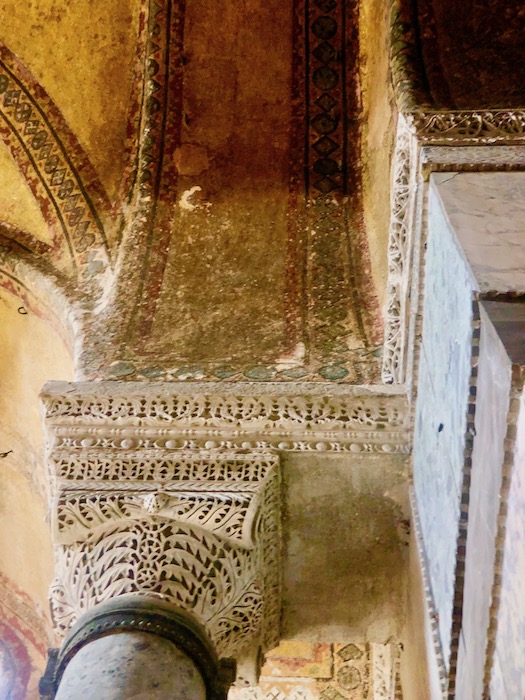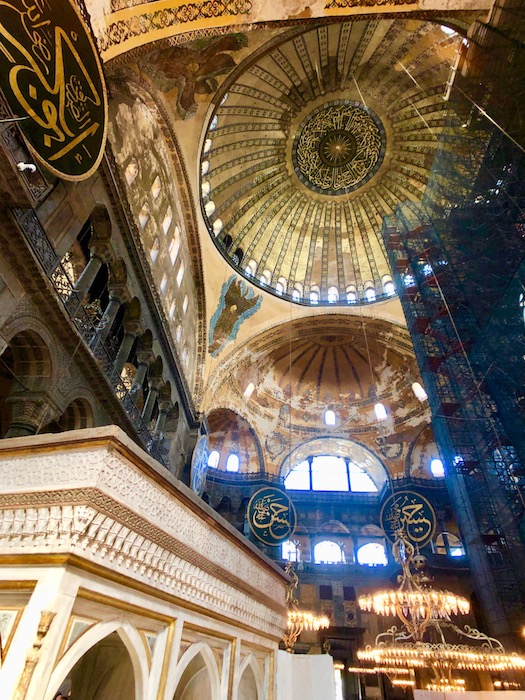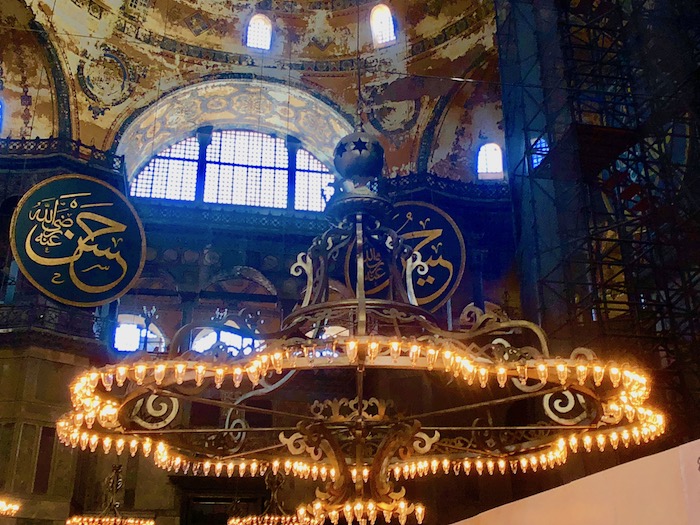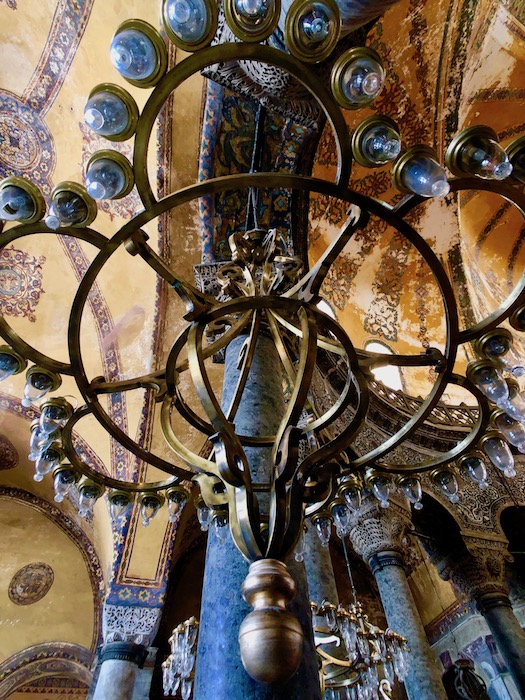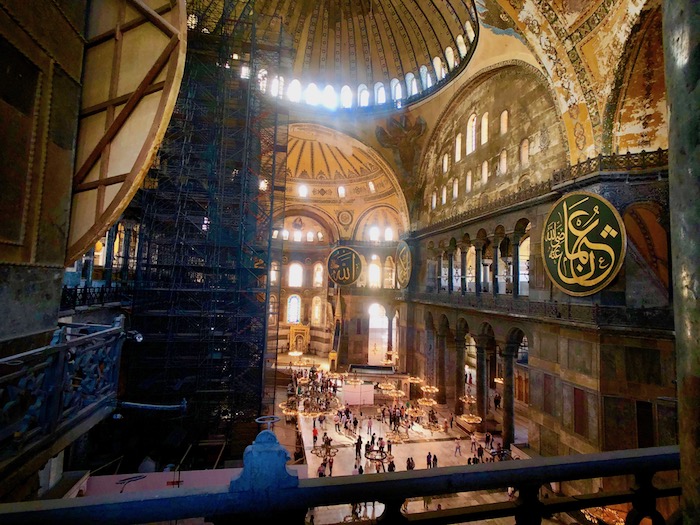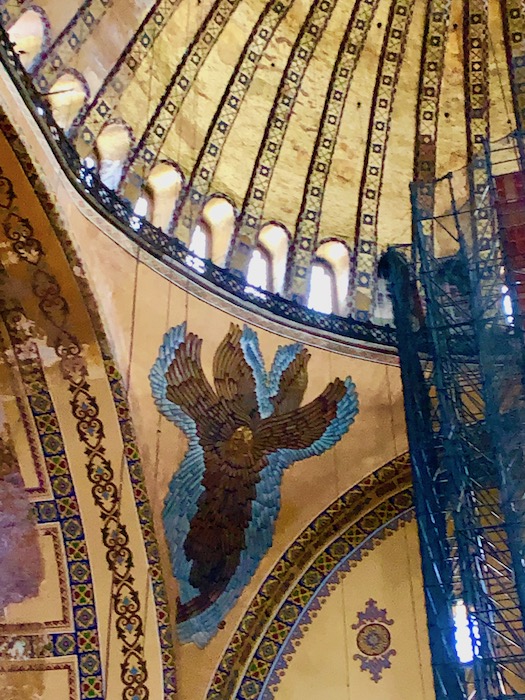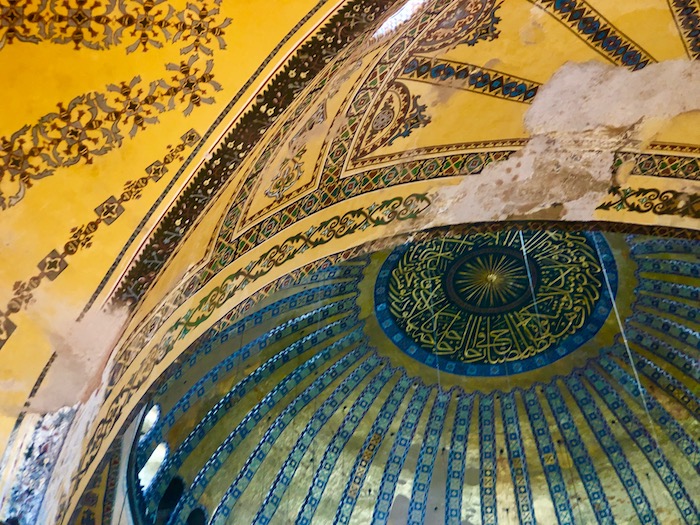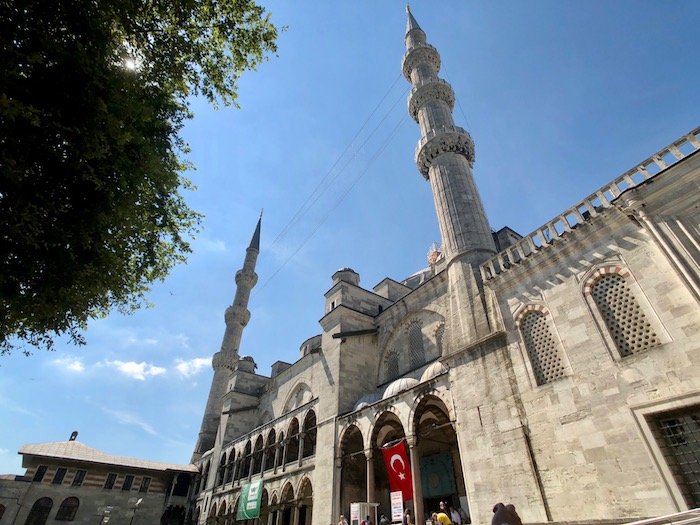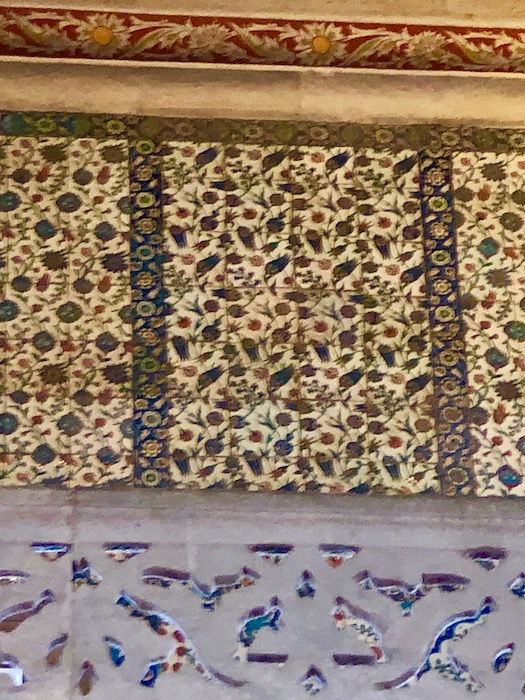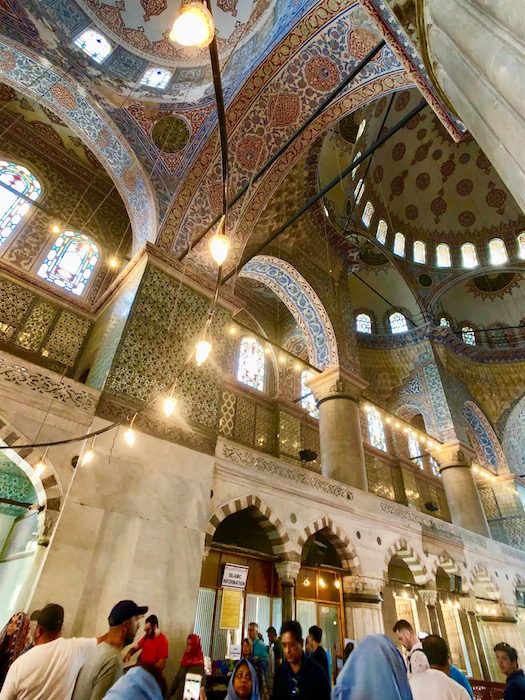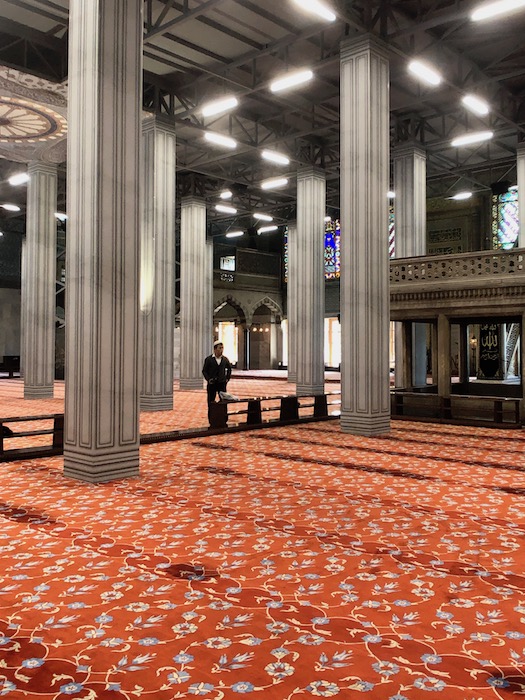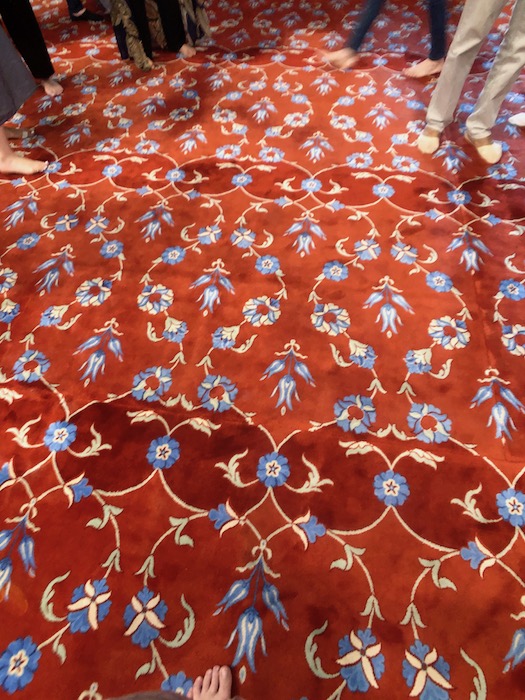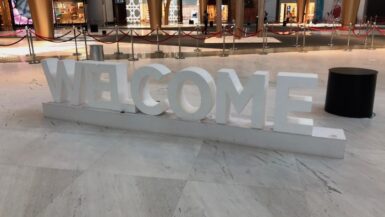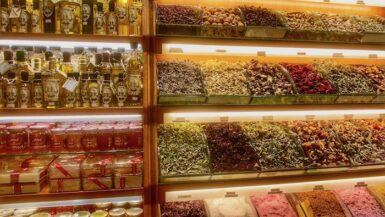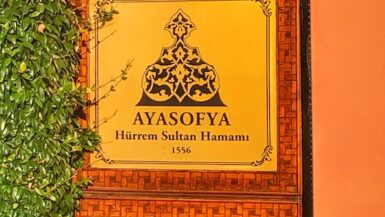July 16, 2019
As I walked around Old Town, I noticed that the queues for the Hagia Sophia and the Blue Mosque (as with other sites) were long. The thought of standing in the sunshine and heat was not appealing to me so, prior to bed, I investigated ways of fast-tracking entrance. I discovered a small-group walking tour that included entry to both. I booked it and immediately received instructions that someone would pick me up at the hostel between 8:45a-9:00a.
I had just enough time to eat a small breakfast, have a cup of tea, and a quick conversation with a young Swedish man I’d met earlier at the hostel before I was picked up and escorted to the group.

Cengiz, our guide for the morning, was pleasant and very knowledgeable. In Turkey, all guides must be licensed after receiving a 4-year degree, a trial guided tour, and an in-depth background check. If ever in Turkey, make sure you see a guide’s credentials (they have to have their identification card visible at all times). Since they are so well educated, it wasn’t surprising that Cengiz was a fountain of information.
Stragglers gathered, we zipped in front of the queue into our own line for security screening and then were inside the walls of the Hagia Sophia complex (also known as Aya Sofya). Many of the major monuments in Istanbul are undergoing restoration and/or construction; the Hagia Sophia was no exception. Scaffolding obscured some of the interiors and many of the mosaics were behind tarps undergoing restoration. Although it did spoil some of the enjoyment, there was still enough to see because it is huge!

The Hagia Sophia was initially built as a church and was, actually built over the sites of two previous churches. Begun in approximately 532 AD under the instruction of Emperor Justianian, it was to be a church of grand proportions. And it was for almost a millennium since it had the greatest dome in the world – the Statue of Liberty, without her flame, could stand tall under the dome.
In 1453, when the Ottomans captured Constantinople, the church became a mosque and minarets were added. Most of the antiquities and “churchy” items were destroyed and the grand mosaics were covered over. It remained a mosque until it became a museum in 1934 after Turkey became a republic.
Both the interior and exterior of the Hagia Sophia are impressive, despite the construction. An amazing amount of natural light shines through the many windows in the walls and underneath the dome. Unfortunately, the number of windows also makes it difficult to get well-exposed photographs. Added to the natural light, there are dozens upon dozens of chandeliers giving off more light.
Based on the photographs I took, it appears that I have a bit of a fascination with the chandeliers – both lit …
and unlit.
The second-floor wraparound balcony is where the mosaics not currently under renovation are located. Luckily, one doesn’t have to take the stairs to get to the second story (which is actually up about 3-4 stories), you can walk up the winding ramp. Apparently, back in the day, high-ranking officials didn’t walk up the stairs, they were carried by servants; thus, the ramp.

The view from the balcony was amazing, but again the light from the windows spoiled many a photograph. The painted ceilings, including inside the dome, are fabulous.
But it was the mosaics with which I was infatuated. Although a large number of the tiles are missing, what remains is beautiful.
I’m not entirely sure why Jesus seems to be giving someone side-eye though.

Back on solid ground, we headed to the Blue Mosque. Unfortunately, almost all of the mosque is under construction, so it was difficult to confirm that it gets its name from the millions of shimmering blue tiles. I guess I’ll just have to return once renovations are concluded.
Begun in 1609 and completed in seven years, the Blue Mosque is massive. The capacity of prayer-goers is surpassed in Istanbul only by the new mosque built by the President on the Asian side (that one can handle 65,000 worshippers). Most mosques usually only have one minaret for the Imam to chant the call to prayer five times a day. In what is suspected as a flaunting of wealth, Sultan Mehmet Aga had the architects construct six minarets. So as not to be outdone, a seventh minaret was added to the mosque in the holy city of Mecca.
What I could see of the interior was very pretty, but not as soothing as the Suleymaniye Mosque.
The carpet in the Blue Mosque is bright red, with blue accents – red is not known for its soothing qualities. Many of the tiles and the carpet were heavy with a tulip motif – tulips are my favorite. We were told that the word “tulip” uses the same letters as the name “Allah,” so they are revered and prominent in decorations.
With not much to see at the Blue Mosque, Cengiz took us through the Hippodrome and into one of the smaller underground cisterns. There was a lovely exhibition about the Hippodrome complete with models, maps, art, and artifacts. The cistern itself wasn’t as nice as the one I saw yesterday, but it was an educational stop nonetheless.

Although it wasn’t detailed in the itinerary on the Internet, the last stop of the tour was at a carpet “museum.” While we got a great description of the various techniques used to weave the carpets and how to tell which design of carpet comes from which section of Turkey, I wasn’t a fan of this shopping stop. Since almost all of the carpets are wool and were being flung around creating dust in the air, my breathing became labored – I’m allergic to both wool and dust.

With a need to go back to the hostel to use my inhaler, I waited for an opportune time and made my exit from those still getting the “soft” pressure sales pitch. Knowing that I had a food tour lined up for the evening, I bought a piece of corn on the cob from a street vendor (they are everywhere) for a light snack on my walk back. It was messy but hit the spot. My mid-afternoon was capped off with a nap. After all, I want to be fortified for this evening’s culinary excursion. Did I mention I love food tours!





